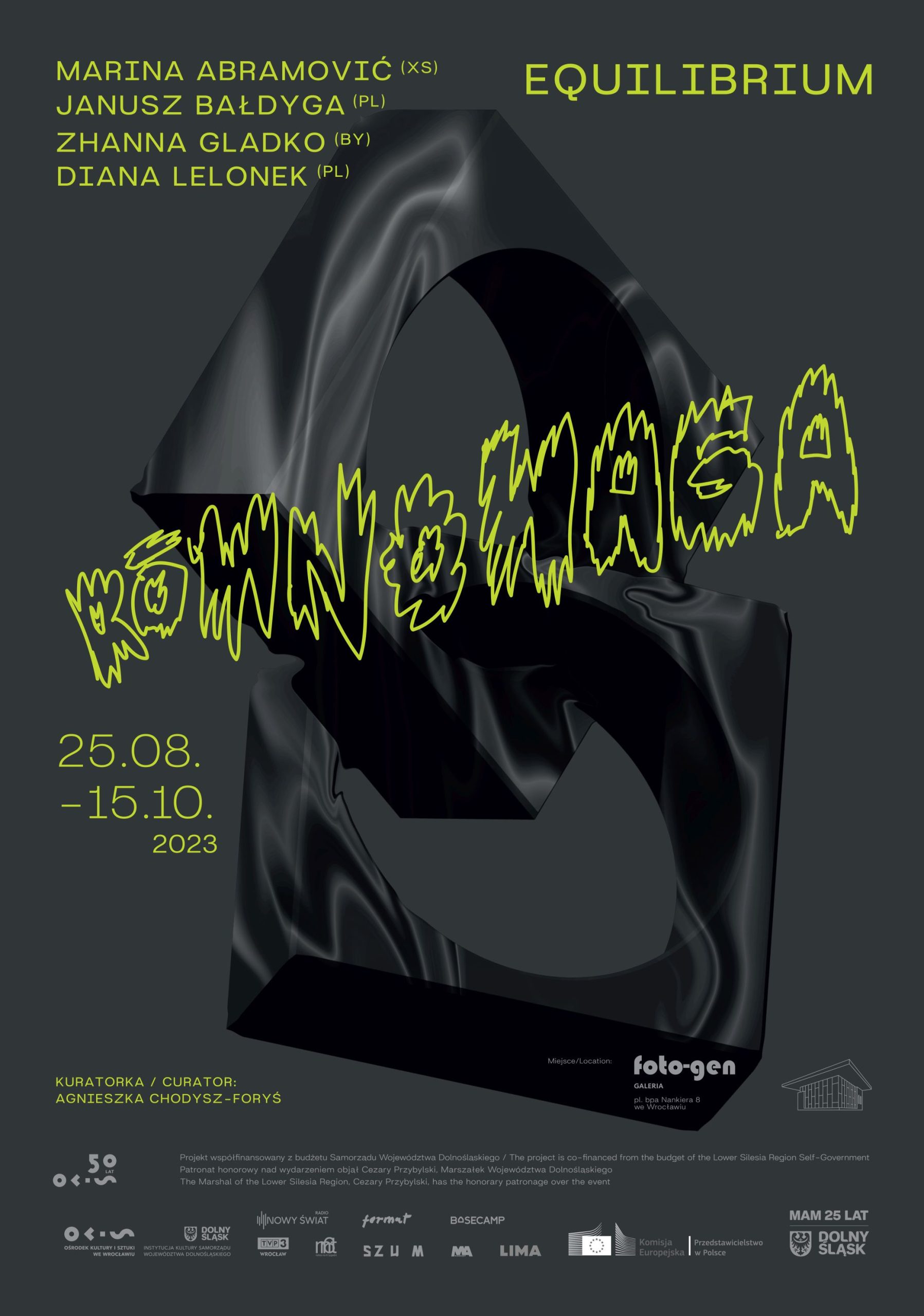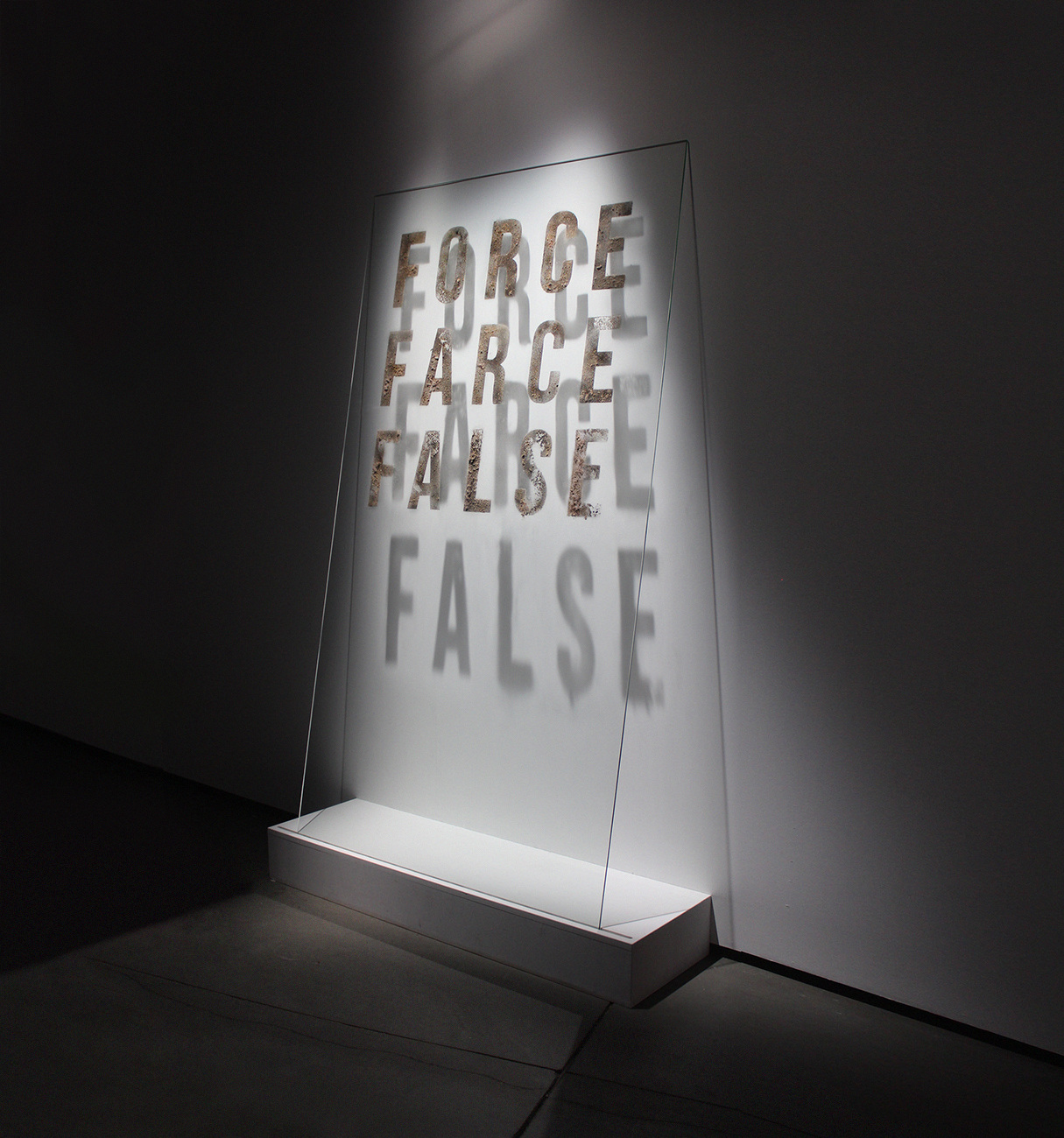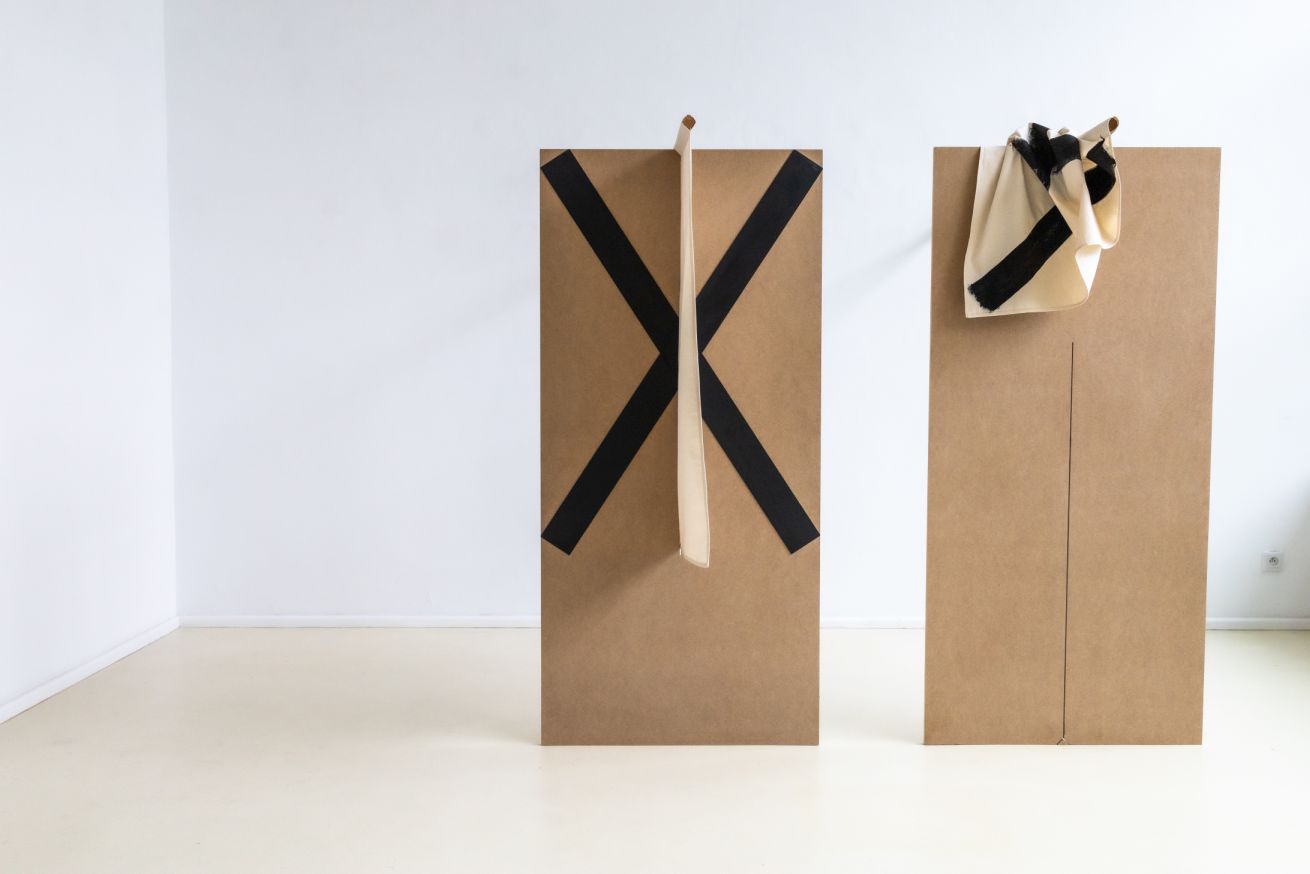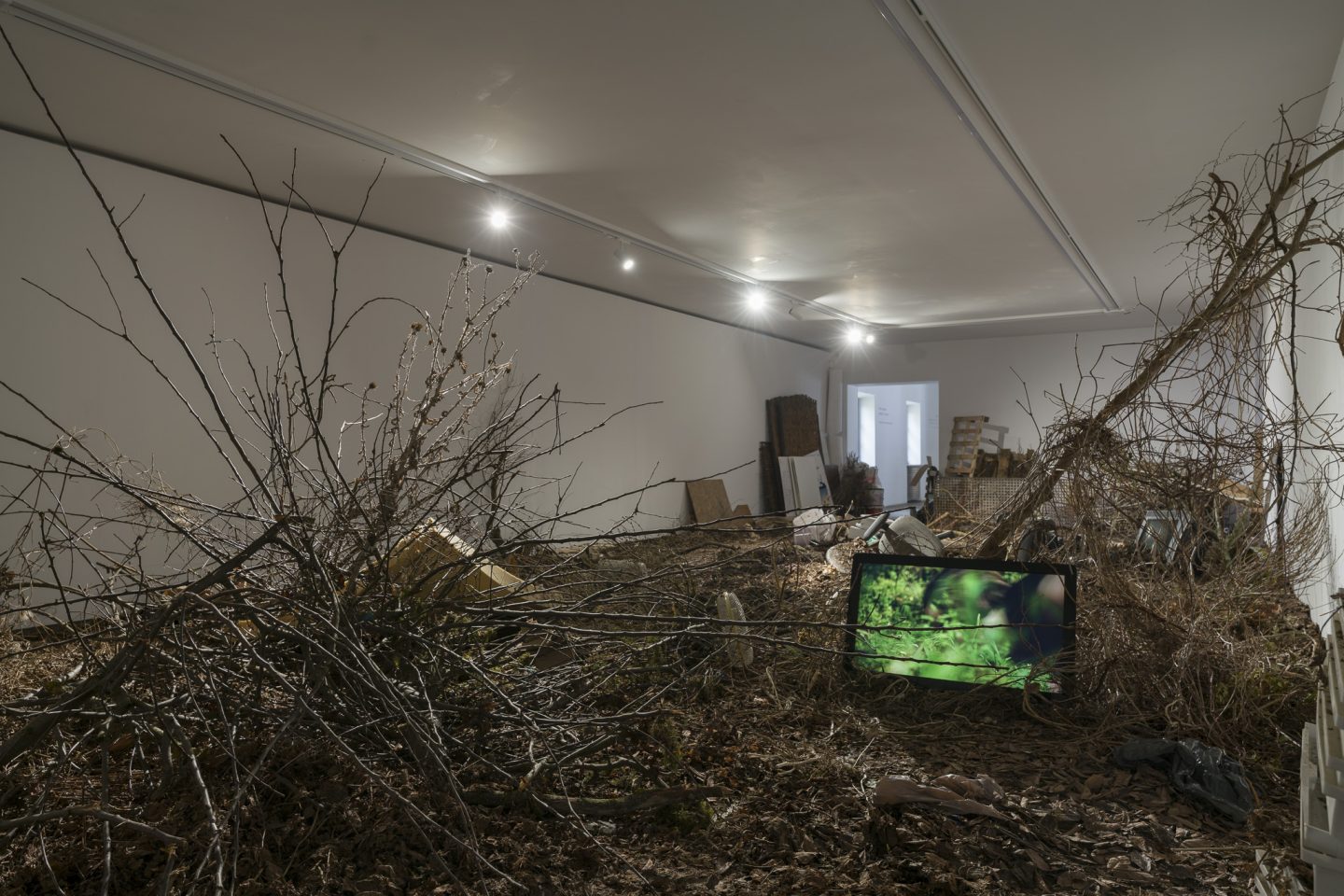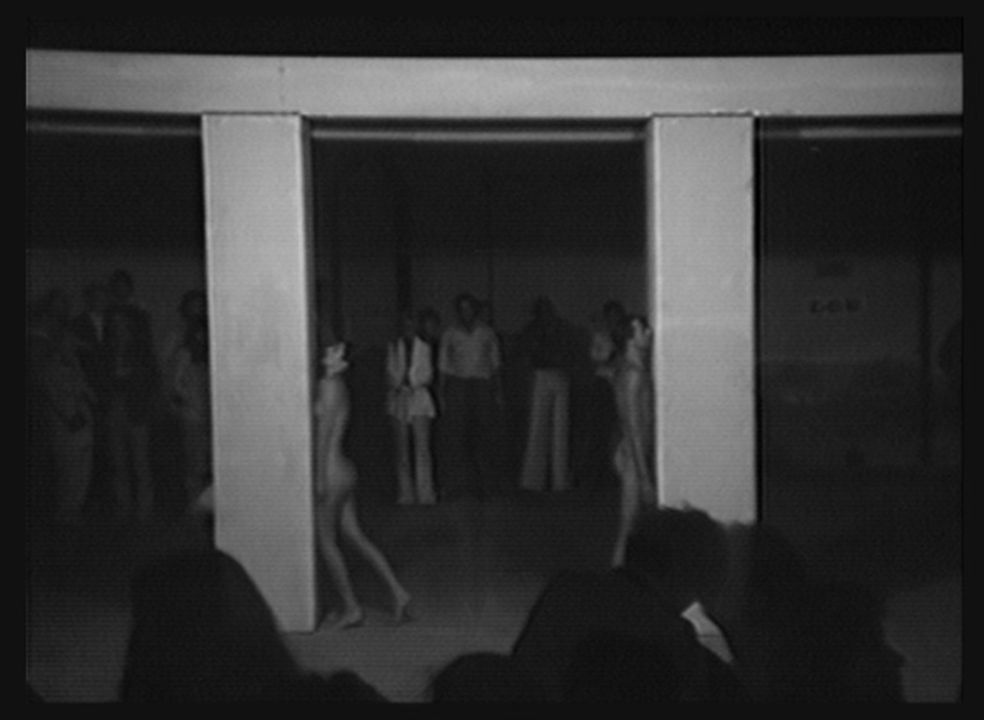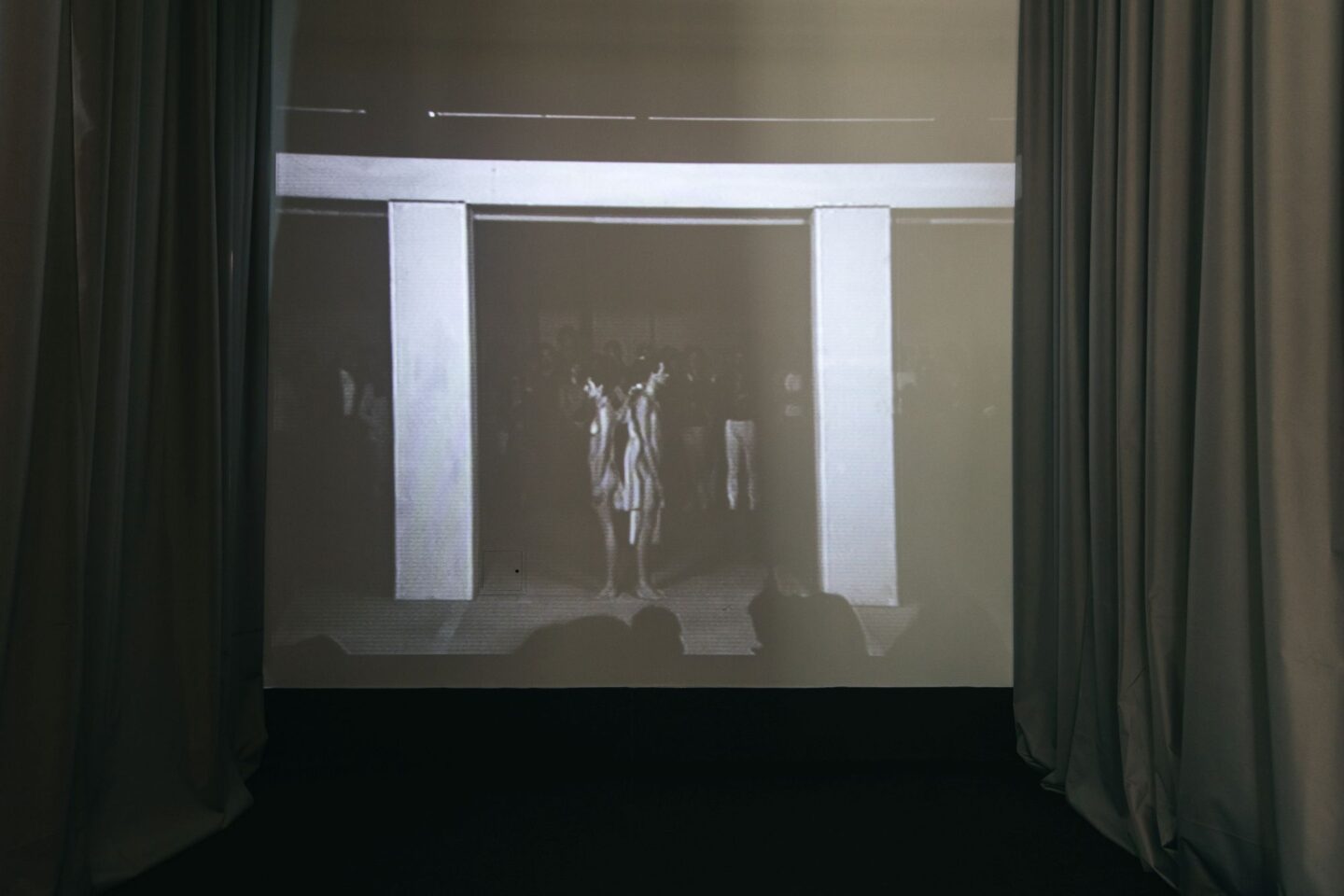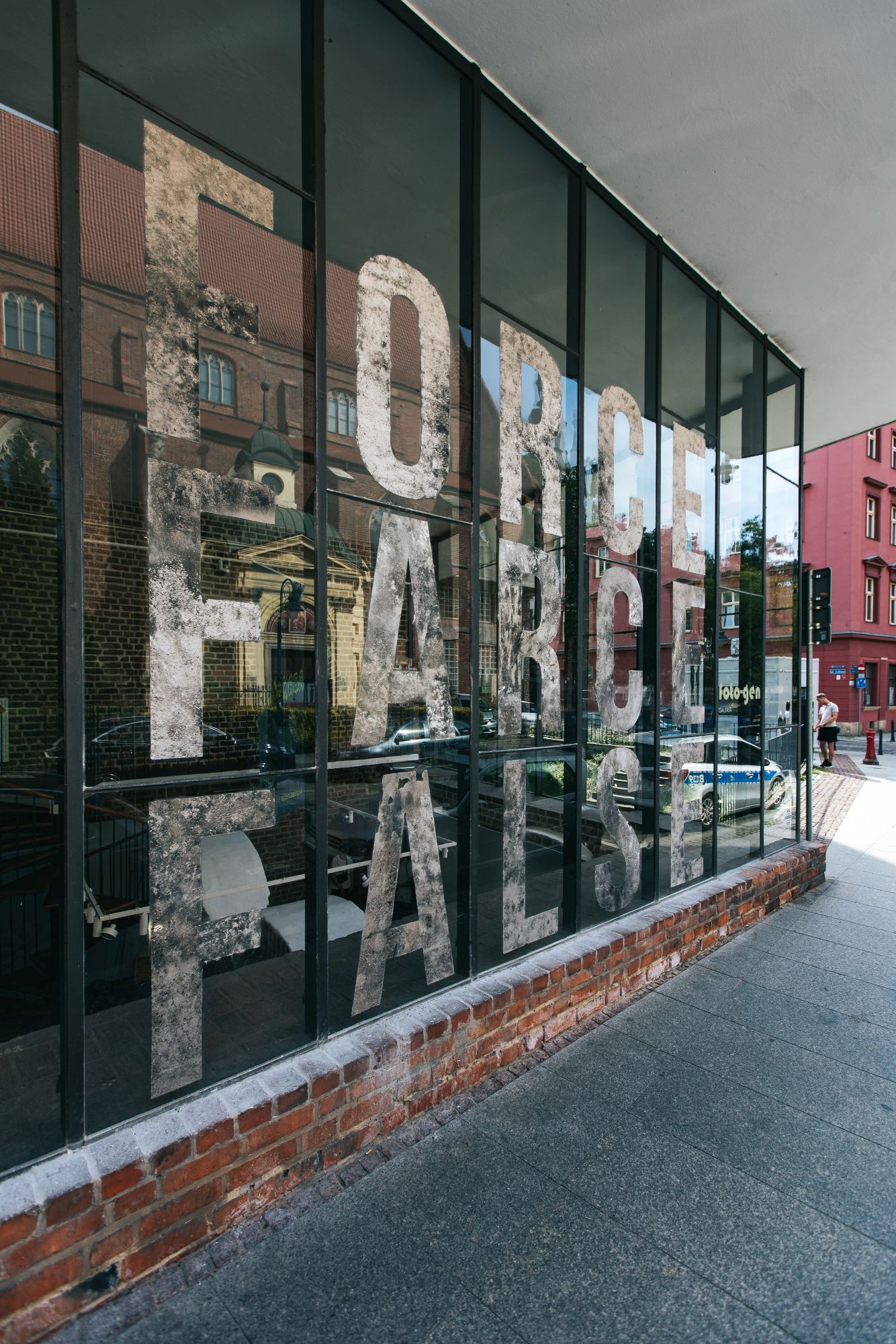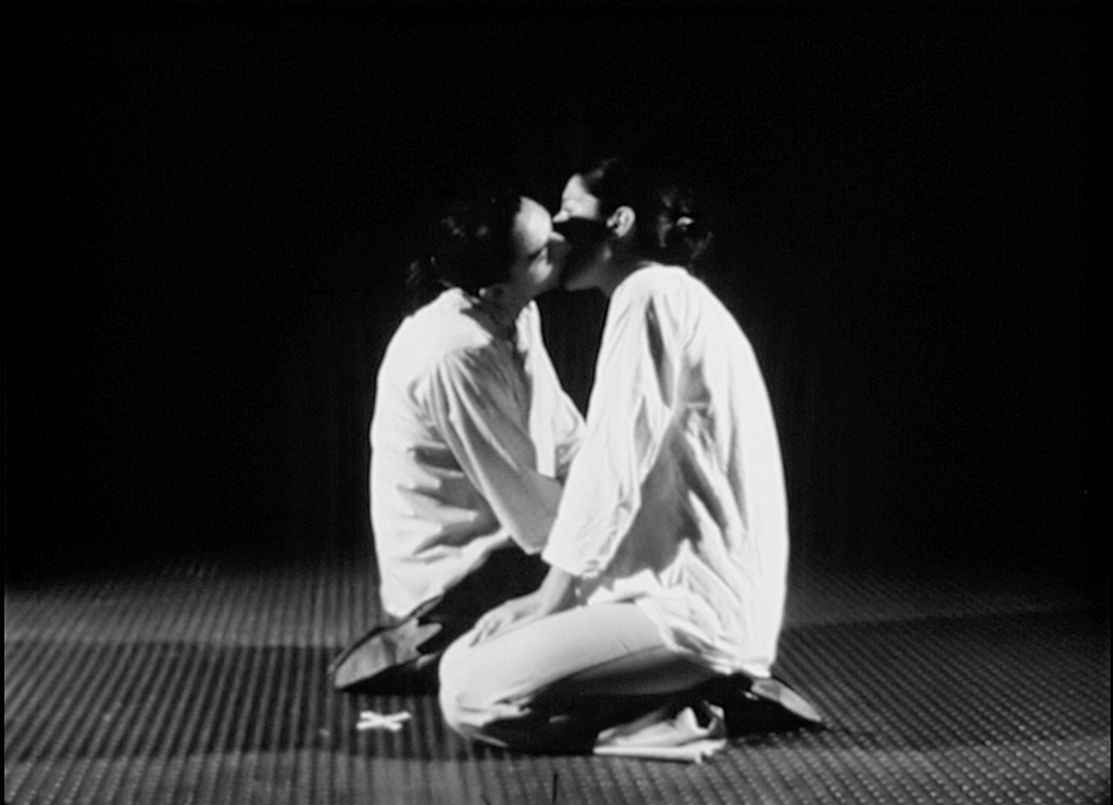
EQUILIBRIUM
There is a word – a safety valve, a misleading and false word, a smokescreen for ubiquitous cruelty. This word is “equilibrium”. It is commonly used to denote aesthetics and harmony, an ideal state of tranquillity in which law and lawlessness, violence and virtue, power and powerlessness occur in equal proportions. The concept is considered crucial in diagnosing the reasons for the world’s destabilisation, the loss of balance between technology and nature, culture and economy, profit and health, need and consumption, information and freedom.
It is generally accepted that the pursuit of equilibrium is a fundamental principle of the organisation of the human living space, and that so-called sustainable development, consisting of environmental awareness, anti-violence, rejection of the anthropocentric model, and efforts to develop democracy and social justice, ought to be the basis of our existence. In contrast, loss of control and destabilisation bring us dangerously close to self-annihilation. However, the problem lies in the fact that by using the concept of “equilibrium,” we are actually avoiding responsibility for the consequences of our acts and decisions. We feed ourselves an illusion, entering an apparent comfort zone that will never have a chance to actually exist.
The word “equilibrium” – which sounds vibrant and soft at the same time – is inherently dualistic. It masks an incessant battlefield, a fierce, brutal struggle whose sole purpose is only (or as much as) to strive for the situation of balance. It is a process, a permanent movement, an unattainable yet imaginable state that can only exist on a macro scale, when the ruthless clash of contrasting forces is remote enough to blur into the conventional poetics of the term.
As is the case with other terms referring to impossible states, the indefinibility of “equilibrium” only permits attempts to imagine and come closer to this inaccessible state: the pure, stable and immovable point of the ideal equilibrium of forces. It is a utopia, a dream abstracted from the environment in which it could happen, which actually renders it a false and incomplete concept. It assumes immobility and a manifold absence: of stimuli, energy, reactions; it is a state of affairs that is impossible in any known environment, always governed by synergy.
Assuming that it is thought that creates reality, and facing so many catastrophes and potential threats with global consequences, a question emerges about the state of our collective responsibility and imagination. Are we using our imagination too rarely, or perhaps we are unable to affirm it? To create (imagine) reality, one must be aware of it and dare to get close enough to it, so that the blood is red, the atrocities of war sting the eyes, and the enrichment at the expense of the powerless is called “exploitation” rather than “diplomacy.” Were we to allow ourselves such courage, we would also be more inclined to run in the opposite direction – closer to the path leading to equilibrium.
The exhibition titled Equilibrium is a reaction to the recent, complex and dramatic events in our socio-political space and the huge scale of inequality in almost every sphere of human life. The selected works address socio-political questions and the issue of ecological equilibrium, but also touch the senses. The exhibition is a place of coexistence of elements with mythical symbolism, the human struggle with the limitations of corporeality, pain, consciousness, trust and its lack, the boundary between life and death, the imbalance in respecting and caring for the environment as such, in which death and decay become the beginning and fuel for new life. The featured works also make direct references to war and the omnipresence of hypocrisy, violence, ruthlessness, aggression, authoritarianism, inhumane behaviour and barbarism in politics.
Agnieszka Chodysz-Foryś, curator
Curator: Agnieszka Chodysz-Foryś
Media patrons: Radio Nowy Świat, Magazyn Szum, Notes na 6 Tygodni, Pismo Artystyczne Format, TVP3 Wrocław
The Marshal of the Lower Silesia Region, Cezary Przybylski, has the honor ary patronage over the event
The project is co-financed from the budget of the Lower Silesia Region Self-Government
MARINA ABRAMOVIĆ was born in 1946 in Belgrade, Yugoslavia. Since the beginning of her career in the early 1970s when she attended the Academy of Fine Arts in Belgrade, Abramović has pioneered the use of performance as a visual art form. The body has been both her subject and medium. Exploring the physical and mental limits of her being, she has withstood pain, exhaustion and danger in the quest for emotional and spiritual transformation. As a vital member of the generation of pioneering performance artists that includes Bruce Nauman, Vito Acconci and Chris Burden, Abramović created some of the most historic early performance pieces and continues to make important durational works.
Abramović founded the Marina Abramović Institute (MAI), a platform for immaterial and long durational work to create new possibilities for collaboration among thinkers of all fields. The institute inhabited its most complete form to date in 2016 in collaboration with NEON in „As One” at Benaki Museum, Athens. Abramović was one of the first performance artists to become formally accepted by the institutional museum world with major solo shows taking place throughout Europe and the US over a period of more than 25 years. Her first European retrospective „The Cleaner” was presented at Moderna Museet in Stockholm, Sweden in 2017, followed by presentations at the Louisiana Museum of Modern Art in Copenhagen, Denmark, Henie Onstad, Sanvika, Norway (2017), Bundeskunsthalle, Bonn, Germany (2018), Centre of Contemporary Art, Torun (2019), and Museum of Contemporary Art Belgrade, Serbia (2019). The artist’s opera „7 Deaths of Maria Callas” debuted at the Bayerische Staatsoper, Munich, Germany in 2020, with further performances scheduled at Palais Garnier, Paris, France and the Greek National Opera, Athens, Greece in 2021. In 2023, Abramović will be the first female artist to host a major solo exhibition in the Main Galleries of the Royal Academy of Arts in London.
Marina Abramović lives and works in New York.
JANUSZ BAŁDYGA (born in Lublin in 1954) studied at the Faculty of Painting of the Academy of Fine Arts in Warsaw in 1974–1978. He graduated in 1979 from the studio of Prof. Stefan Gierowski. Member and co-founder of the PRACOWNIA collective (1976–81), co-manager (together with Jerzy Onuch and Łukasz Szajna) the Pracownia gallery at the Dziekanka Students’ Art Centre in Warsaw (1976–79). Since 1979, he has been a member of Akademia Ruchu theatre. Currently, he is a teacher at the University of the Arts in Poznań, where he runs the Performance Art Studio at the Department of Sculpture. He has created drawings, objects, installations, performances and street actions as well as participated in numerous exhibitions, symposia and artistic manifestations in Poland and elsewhere, including Galerie Donguy, Paris; CCA Ujazdowski Castle, Warsaw; Interdruck Schipper Patitz, Leipzig; Galeria Awangarda BWA, Wrocław; Galeria Labirynt 2, Lublin; Galeria Wschodnia, Łódź; Ośrodek Działań Artystycznych, Piotrków Trybunalski; and numerous projects in Germany, the Netherlands, Scotland, Austria, Russia, Taiwan, Belarus, Switzerland, Israel, Norway, Spain, Japan, Indonesia, Canada, the USA.
Janusz Bałdyga’s main form of artistic expression is performance. He has developed his own original character of artistic statements, in which he consistently reduces the language and means of expression, creatively using simple elements to create basic structures – line, circle, rectangle, point. Bałdyga uses the concept of “marked places,” in which the sense of space, its conditions and the dynamics introduced by human presence are of great importance. The artist’s body also becomes a constructional element or a tool for describing space and struggling with matter (Inclinations; Attention: Border). His actions are constantly accompanied by balancing around the critical point and attempting to activate the latent sphere. To a large extent, Bałdyga’s performative works trigger a sense of drawing the viewer into the space and course of a ritual. Their social, political or philosophical overtones leave no doubt as to the country of the artist’s origin and his tradition, but at the same time they do not obscure the universal dimension of these highly personal messages. As he himself has stated, “I am not a commentator but a perpetrator of the given situation, which certainly – situated in a concrete time and space – cannot be free from social and political regards”.
ZHANNA GLADKO In 2003–2008, the artist studied at the Belarusian State Academy of Arts, the Department of Easel Graphics. Since 2010, she has been involved in professional activities, also taking part in numerous exhibitions. Through the strategy of constructing ambivalent images, all her works are intended to rethink/deconstruct extensive concepts, such as the system of art and society, religion and culture, history and memory, gender policy, the analysis of the role of contemporary museum, the subject of identity crisis, etc. By exploring these issues through her private experience, Gladko deliberately profanes and at the same time updates and expands them.
DIANA LELONEK has graduated from the Faculty of Multimedia Communication of the University of the Arts in Poznań (2014), where she has also completed Interdisciplinary Doctoral Studies and earned a doctor’s degree in visual arts (2019). In her practice she often refers to the relationship between humans and other species, thus redefining the concept of Nature. She uses a variety of media forms of expression, from photography, objects and installations to herbalism and juice making. She has won numerous awards, including the Polityka Passport (2019), the Vordemberge-Gildewart Foundation Prize (2018), the Dorothea von Stetten Kunstpreis (2022), the Show Off section at the Krakow Photomonth (2014), ReGeneration 3 at the Musée de l’Elysée in Switzerland (2014); she has been shortlisted for the Talents Award of the Polish Radio Programme Three (2017) and Grand Prix at the Photo Festival (2018). She has shown her work at the Edith-Russ-Haus gallery, Oldenburg; Culturescapes Festival, Basel; Centre for Contemporary Art Ujazdowski Castle; Arsenal Gallery, Bialystok; Le Musée de l’Elysée, Lausanne; MOCAK, Krakow; Krakow Photomonth; Temporary Gallery, Cologne; Museo Amparo, Mexico; Tokyo Photographic Art Museum; Tallin Art Hall; WRO Biennale; Kunstmuseum Bonn; Tinguely Museum, Basel.
15.08, 6pm
opening
14.09, 5pm
curatorial walk
free entrance
27.09, 6pm
perfomance
Grotowski Institute in Wrocław
13-14.10, 2pm-4pm
discussion panels
DCF Piano Bar
11.10, 5pm
curatorial walk
free entrance


